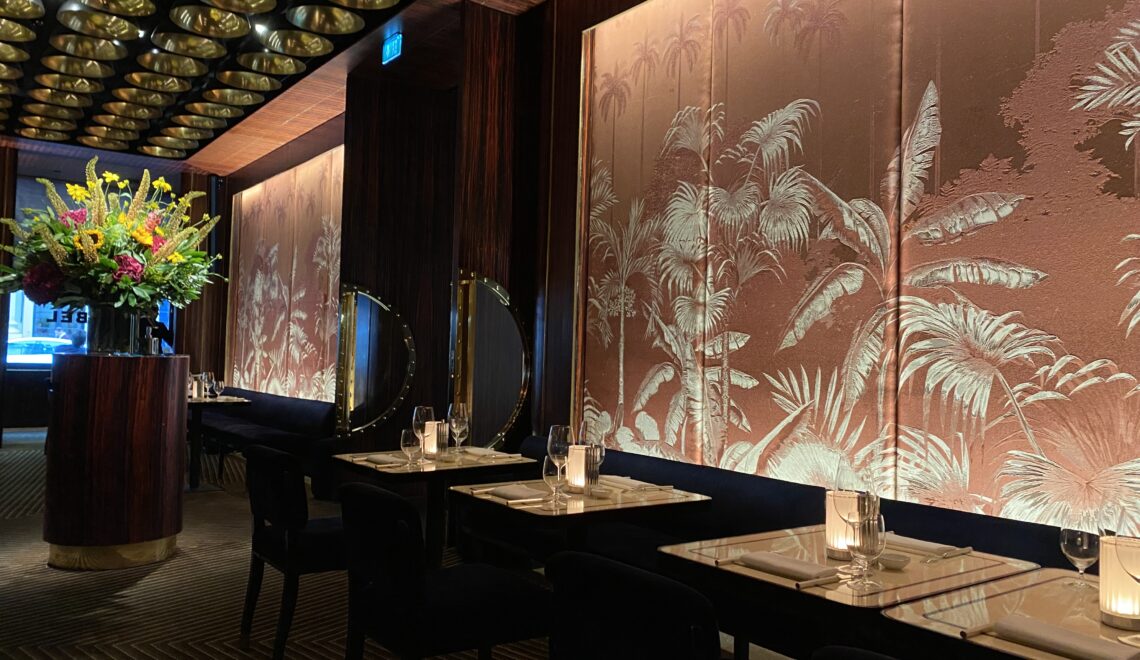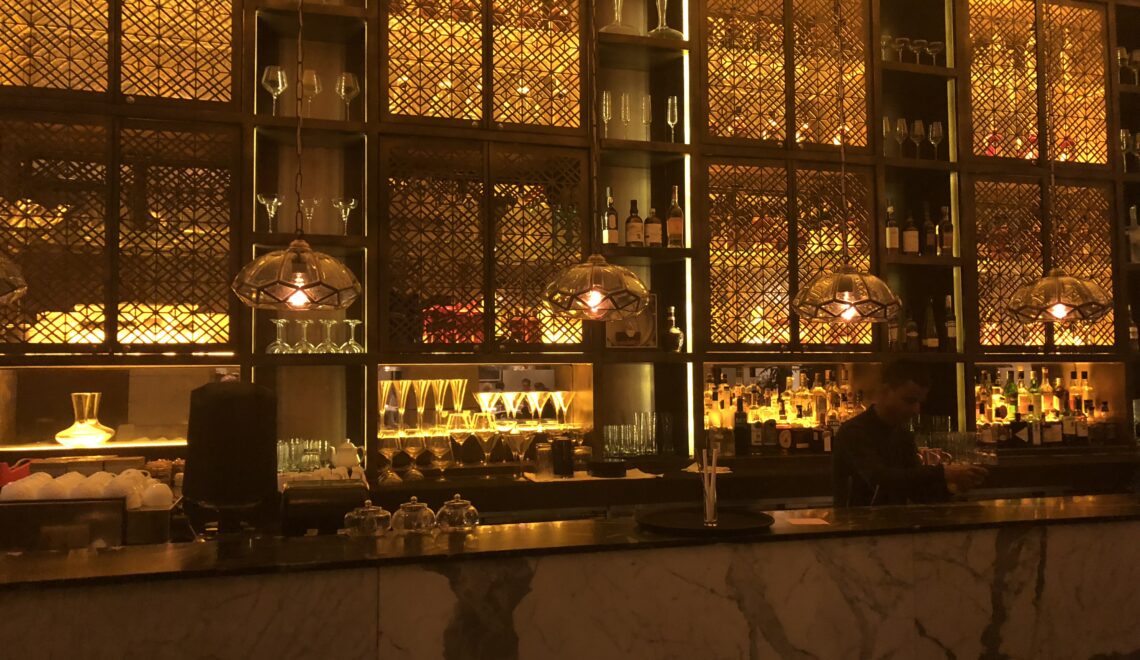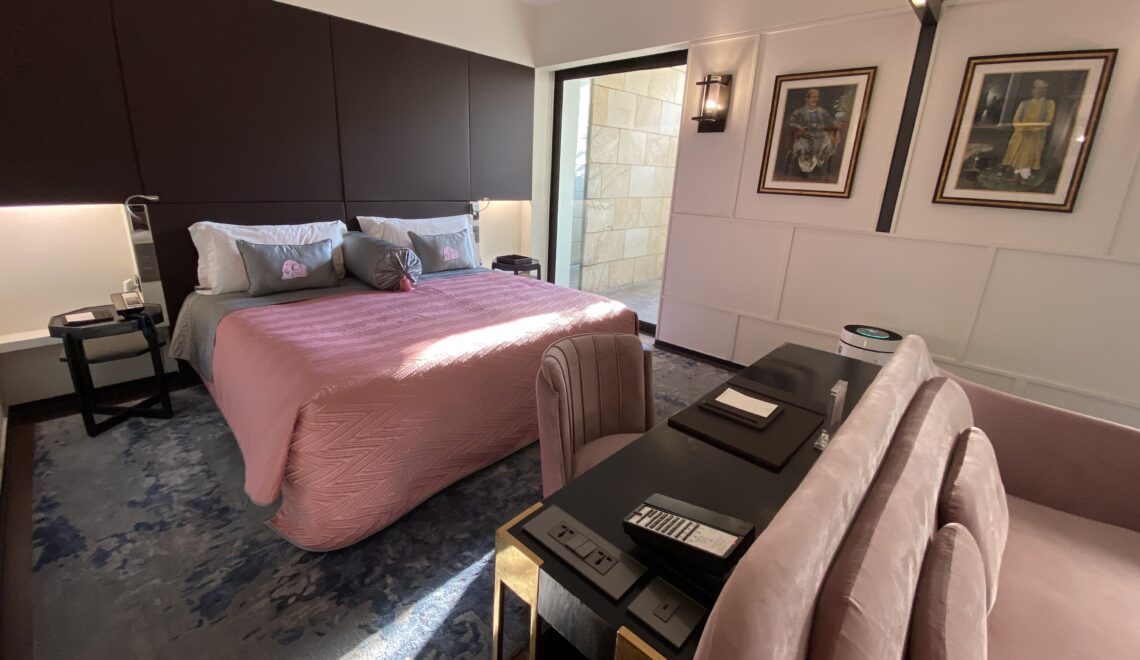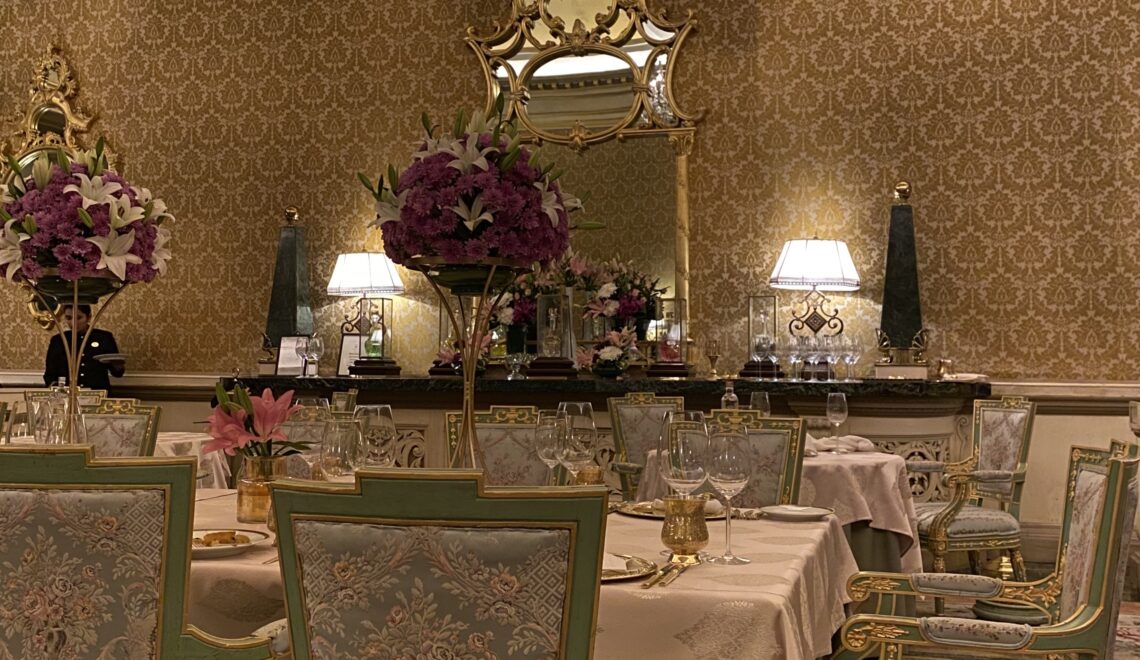
The Rambagh Palace might just be the smartest dining address in Jaipur. Originally built in 1835 as a garden residence for the queen’s favourite handmaiden, it’s had many reincarnations as a royal guesthouse and hunting lodge, the residence of the Maharaja of Jaipur Sawai Man Singh II—and most recently, as a luxury hotel operated by the Taj Hotel Group.
As one would expect, there’s a certain grandeur on display, which starts to reveal itself the moment you pass through security on your way up the floodlit driveway. Engulfed in 43 acres of lush greenery, you’ll eventually find yourself at the main entry point to the hotel, an elaborate structure of white marble latticework, sandstone-coloured balustrades, and intricate cupolas, showcasing the best of Rajasthan’s architectural heritage. Here, the traditionally dressed front of house team take charge, greeting you in all their finery as you’re ushered into the expansive lobby with welcoming smiles.
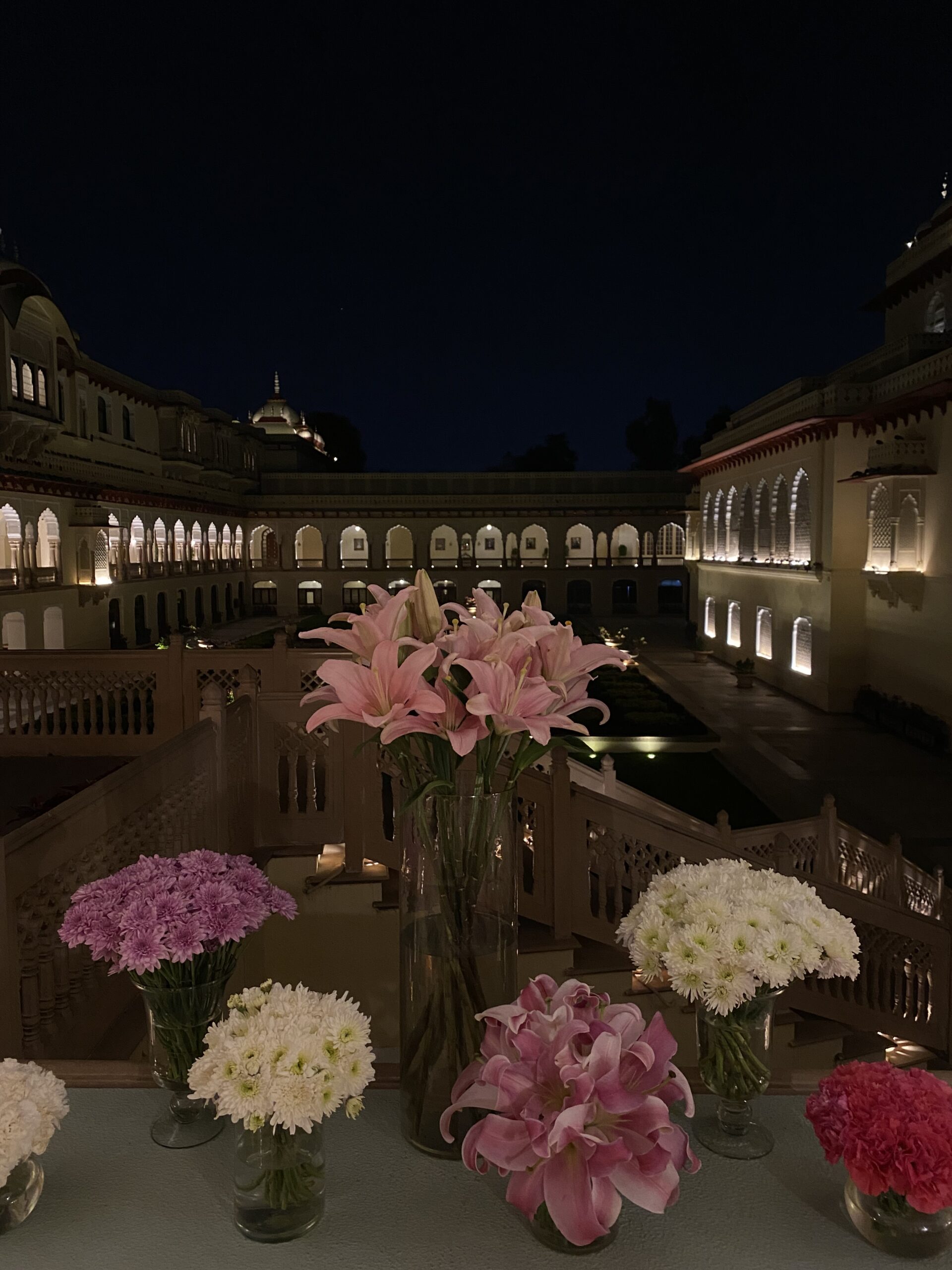
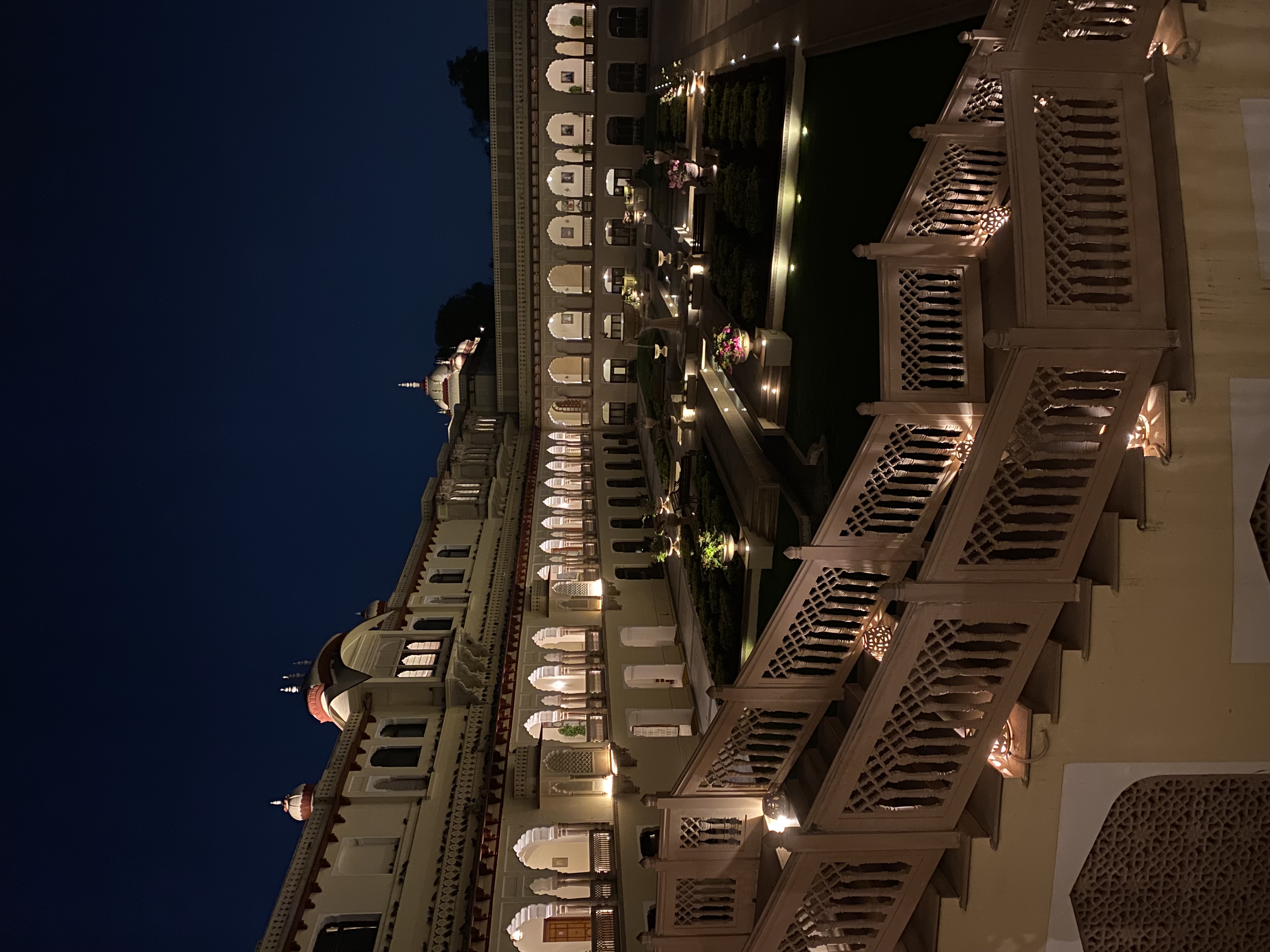
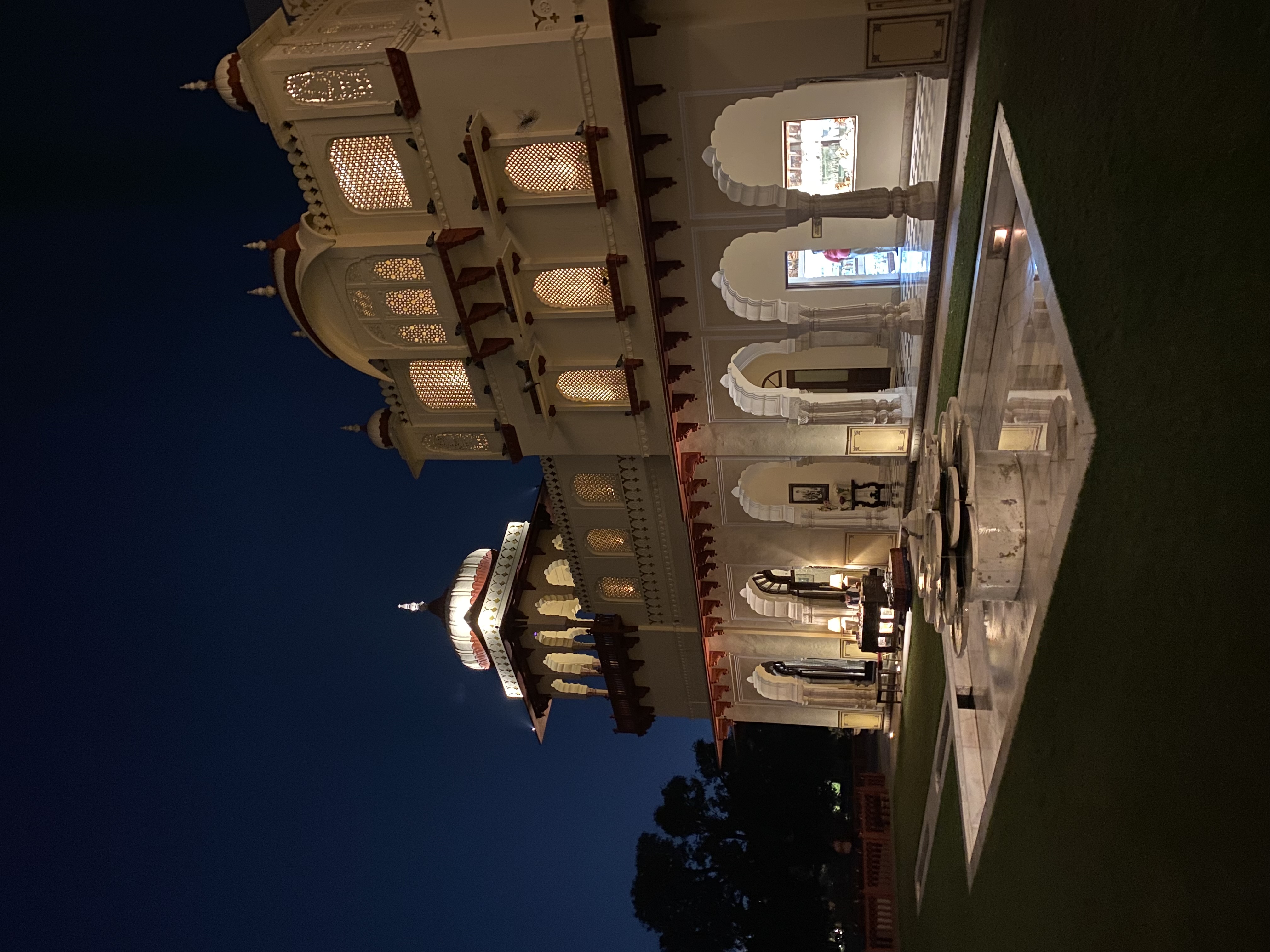
Our destination was the Suvarna Mahal (aka Golden Palace) Restaurant, Rambagh’s flagship fine dining establishment serving authentic local dishes from India’s northern regions. Prior to this however, a pre-dinner cocktail at the Polo Lounge is a mandatory requirement.
A throwback to the imperial days of the British Raj, the Polo Lounge was the venue-du-jour for post-match socializing. Polo came to India in the late 19th century, and Maharaja Singh II was such an ardent fan, he had polo grounds constructed just off the grounds of the palace. Much of what’s on display gives you a small taste of past colonial times, including the most fantastic portable walnut bar, as well as trophies and memorabilia from the royal Jaipur polo team. Today it’s a charming cigar and cocktail lounge, where the bar staff mix a wicked classic manhattan.
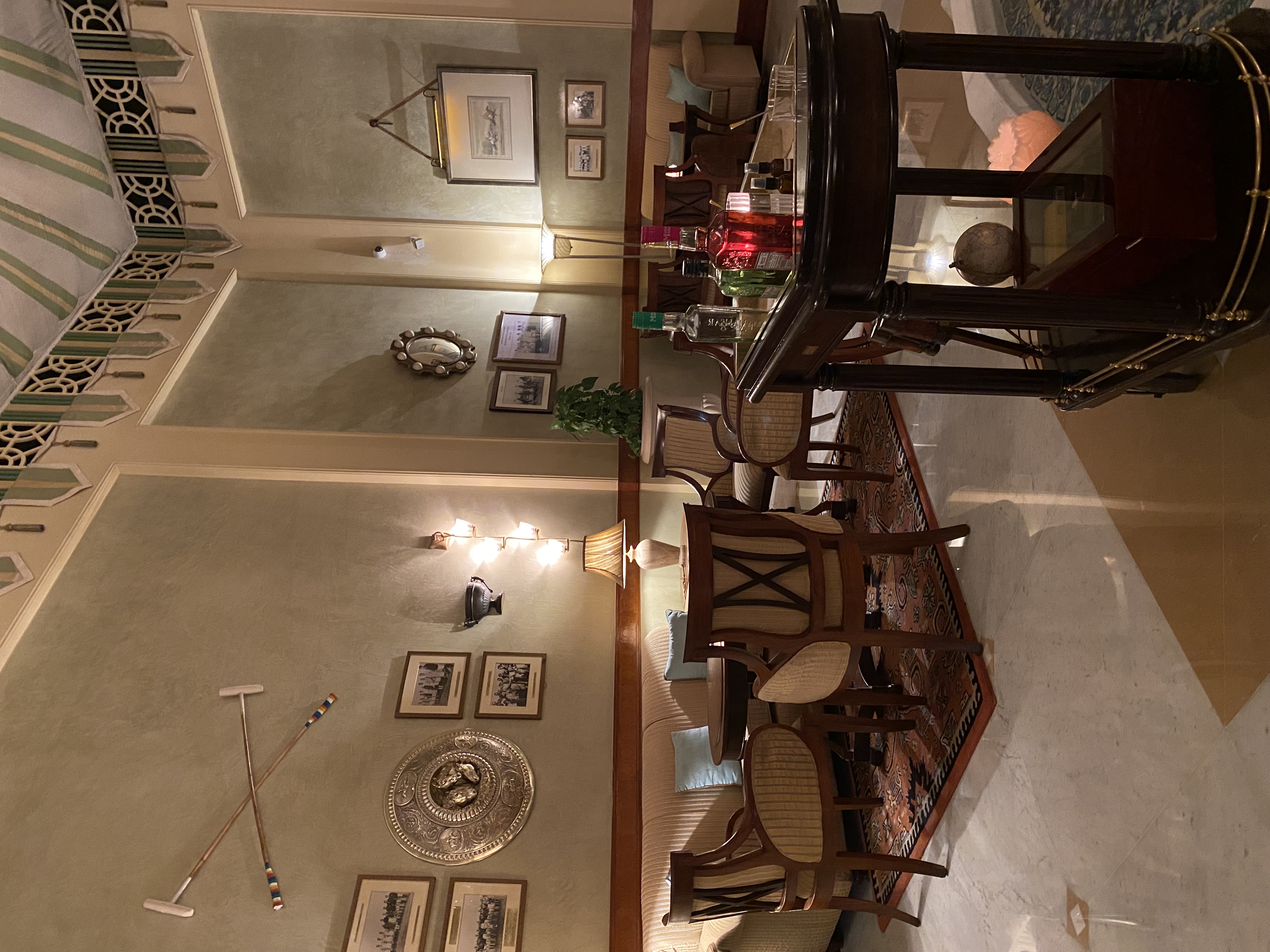
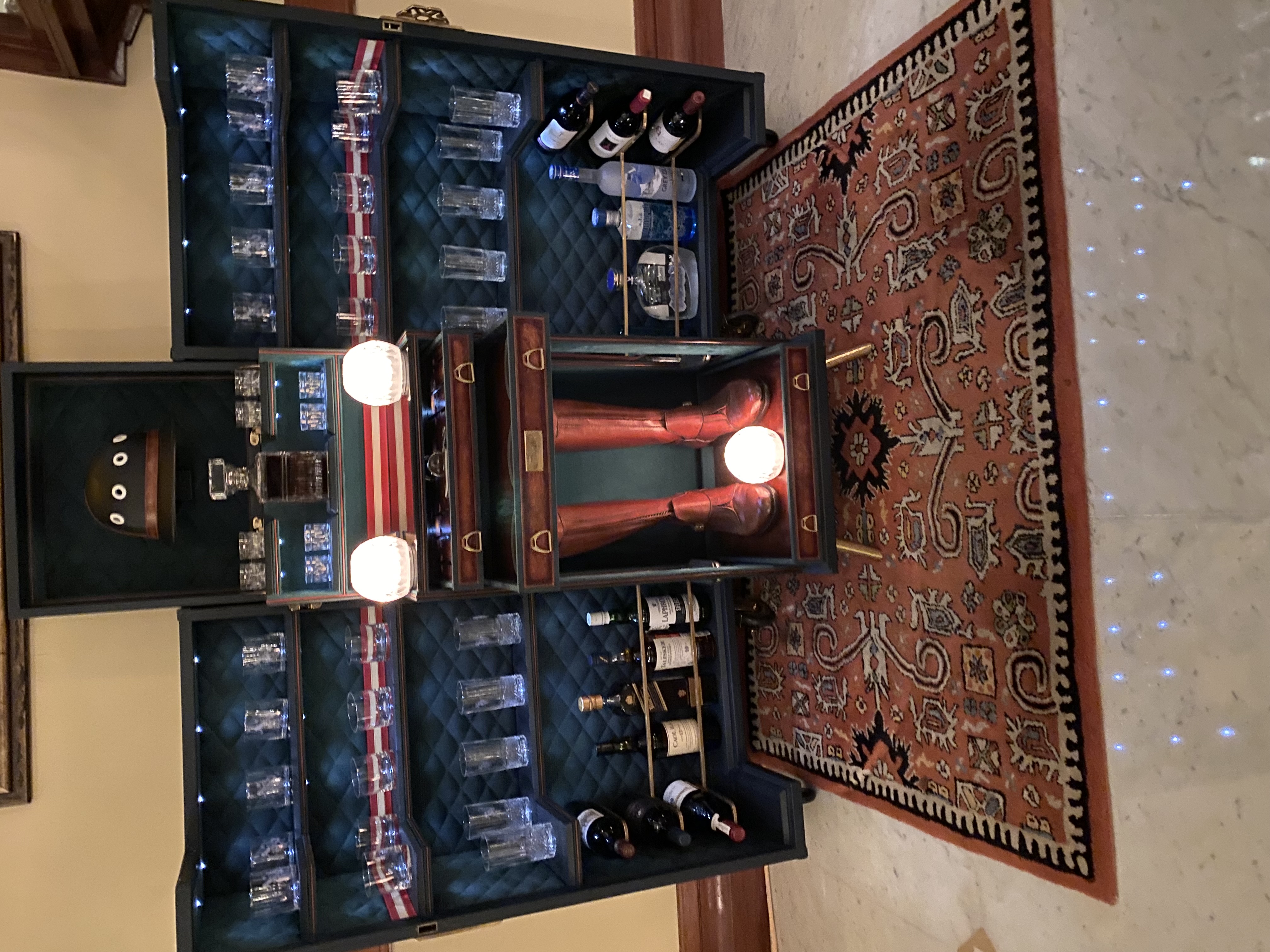
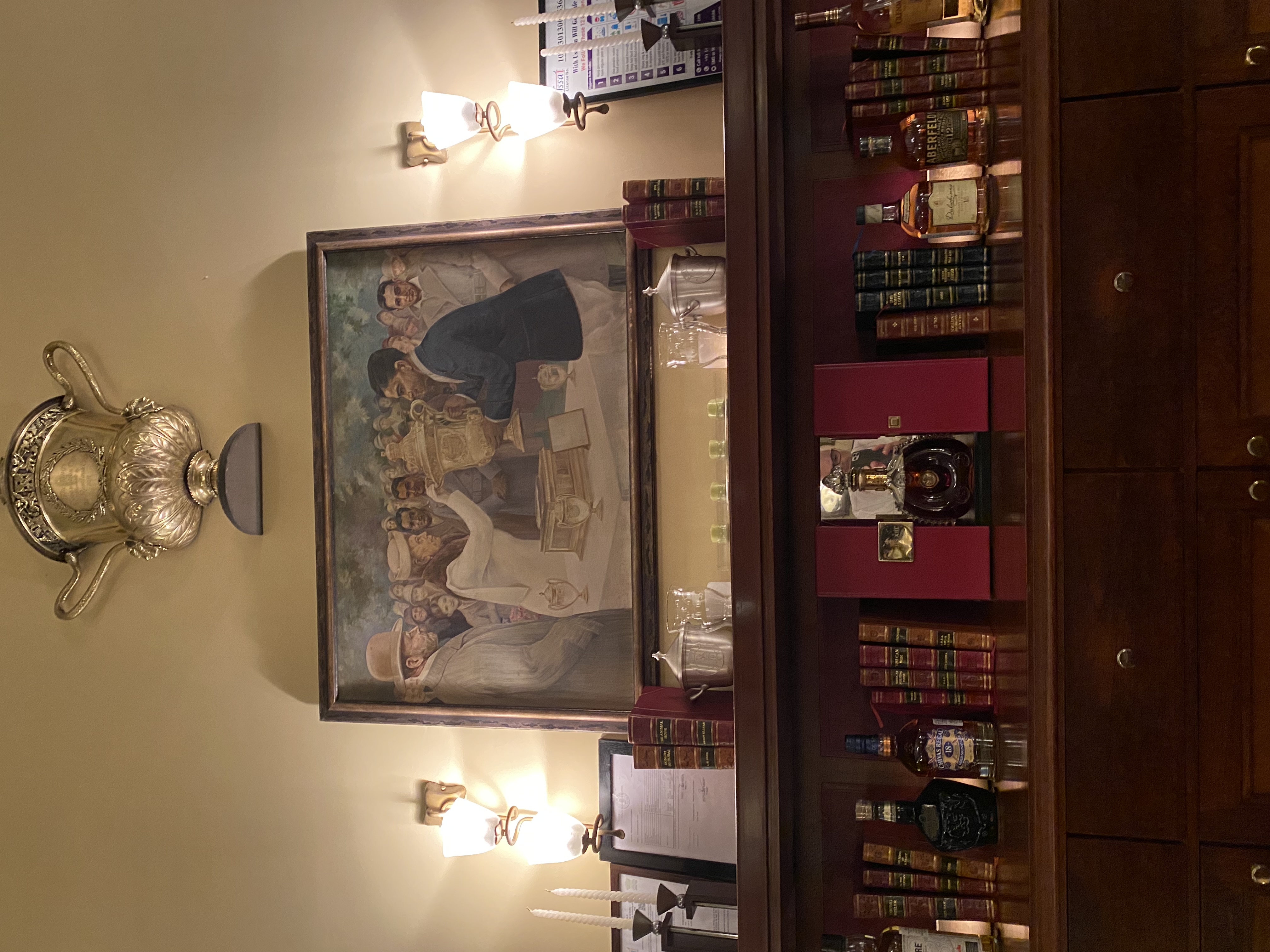
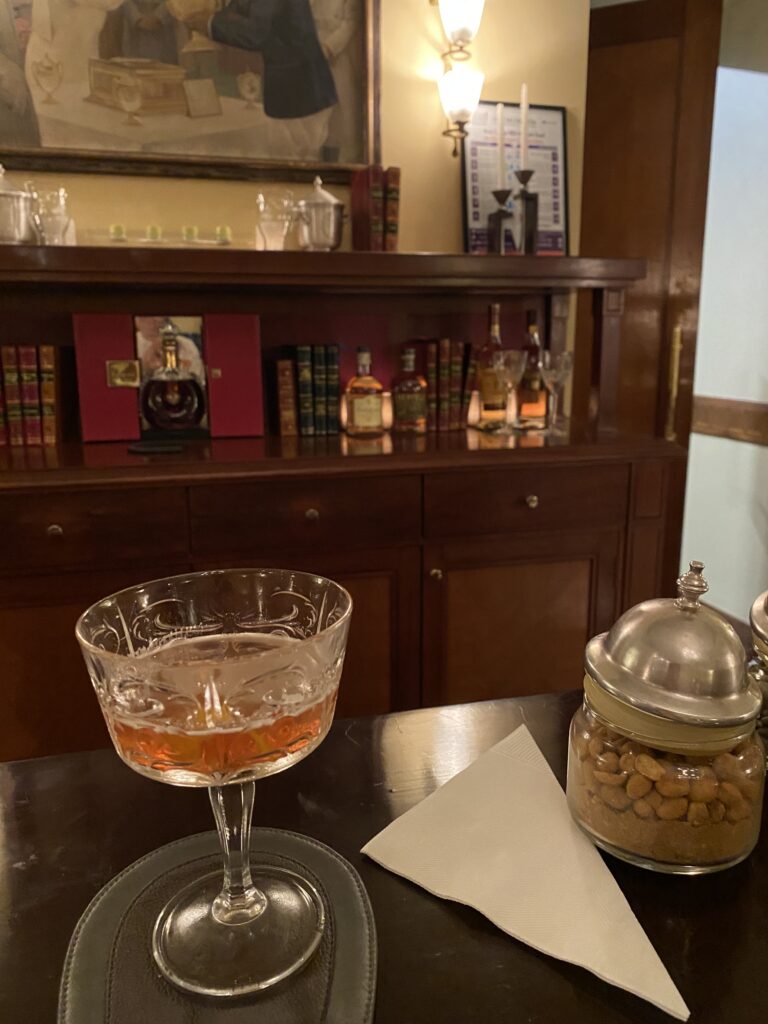
Suvarna Mahal Restaurant sits just off the main gardens through a mirrored entrance. It’s worth giving a special nod to the Persian-inspired Mughal gardens. Unlike most other hotels where the gardens act solely as a transitionary space to get guests from point a to b, here they serve the purpose of accentuating the hotel experience. Perfectly manicured, the inner courtyard gardens are a beautiful space for quiet meditation, while patrons of the Verandah Café can stretch out across the lawns as part of their dining experience under the stars. If you’re lucky, you’ll get to encounter one of the hotel’s resident peacocks on your way to your dinner date.
Suvarna Mahal’s dining room is a bombastic ode to every Baroque and Renaissance-inspired interior imaginable. Think gilded columns and damask-patterned silk panelling in shades of gold, framing a fresco-covered ceiling depicting the four seasons. Italian chandeliers add glitz to the occasion lighting the way as you tread across a huge, single-piece pink woven carpet from Kashmir. Gold plated tableware is the focal point once seated. Everything is a spectacle on the senses, extravagant, and slightly out of place, all at the same time.
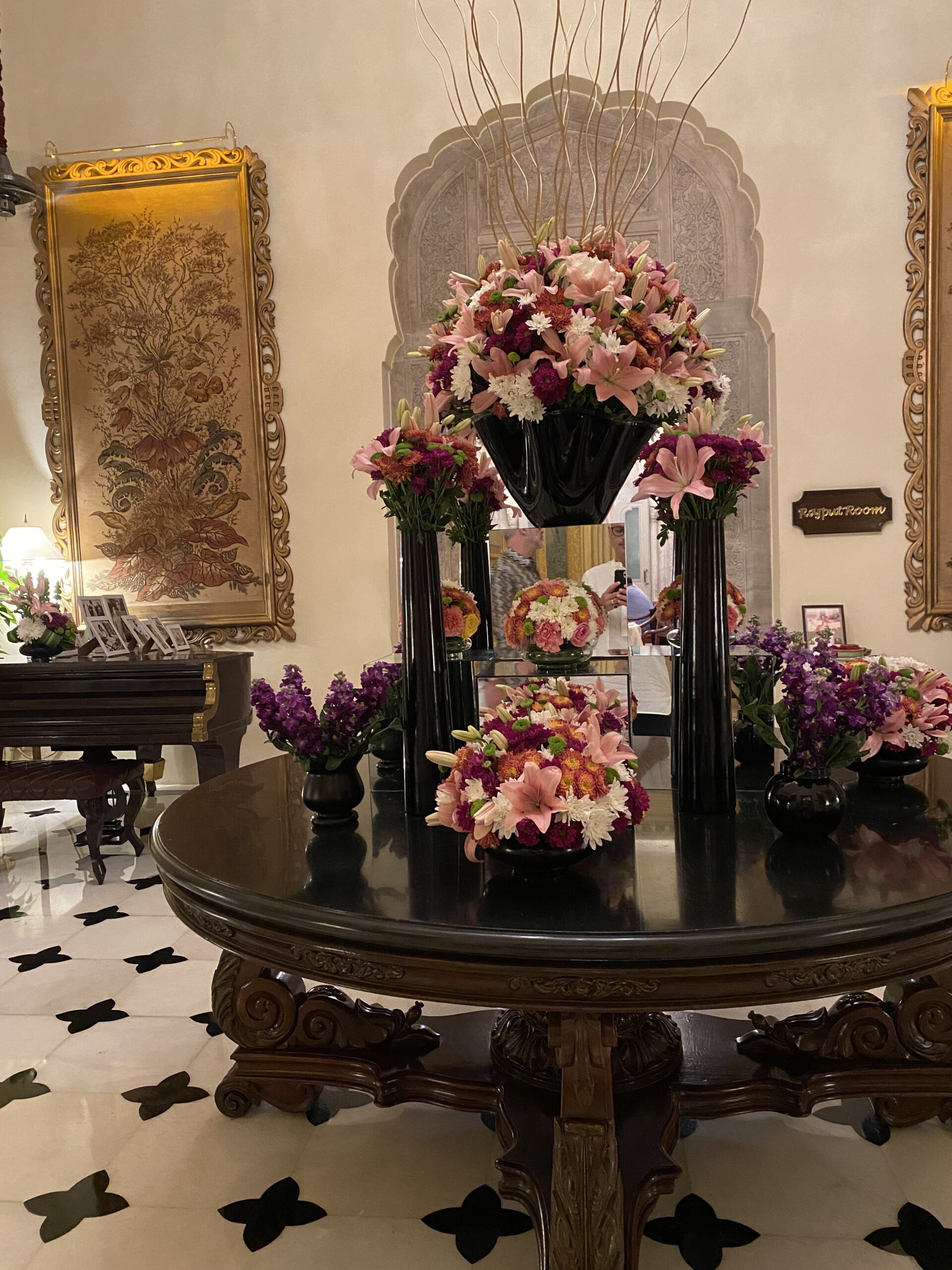
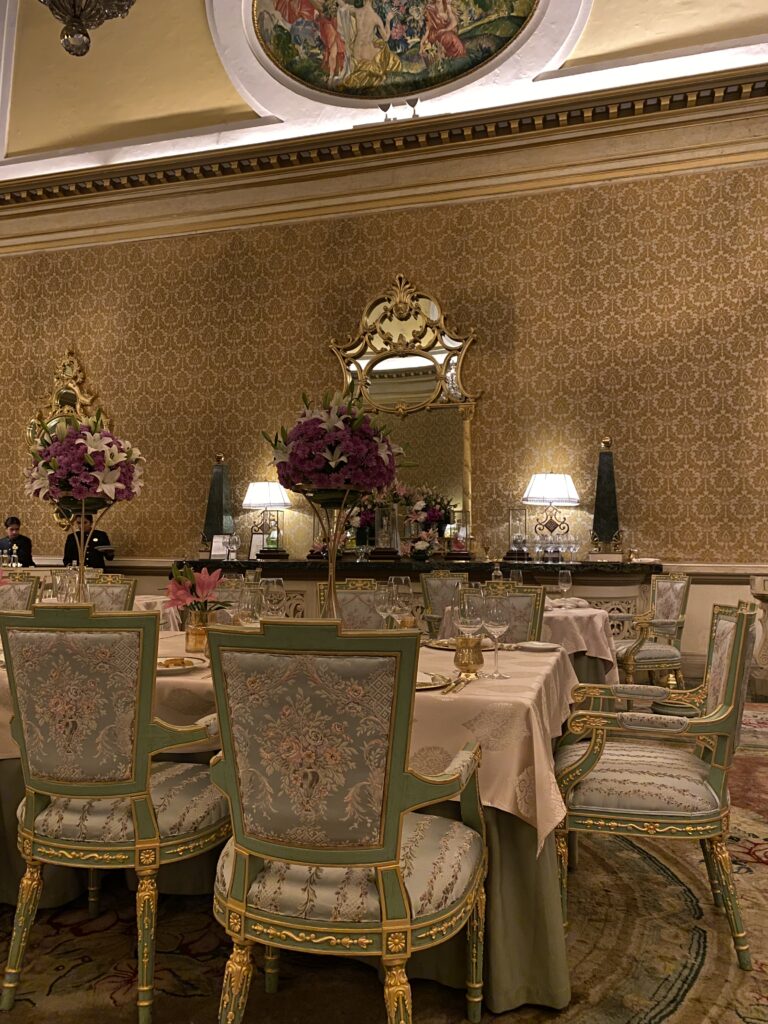
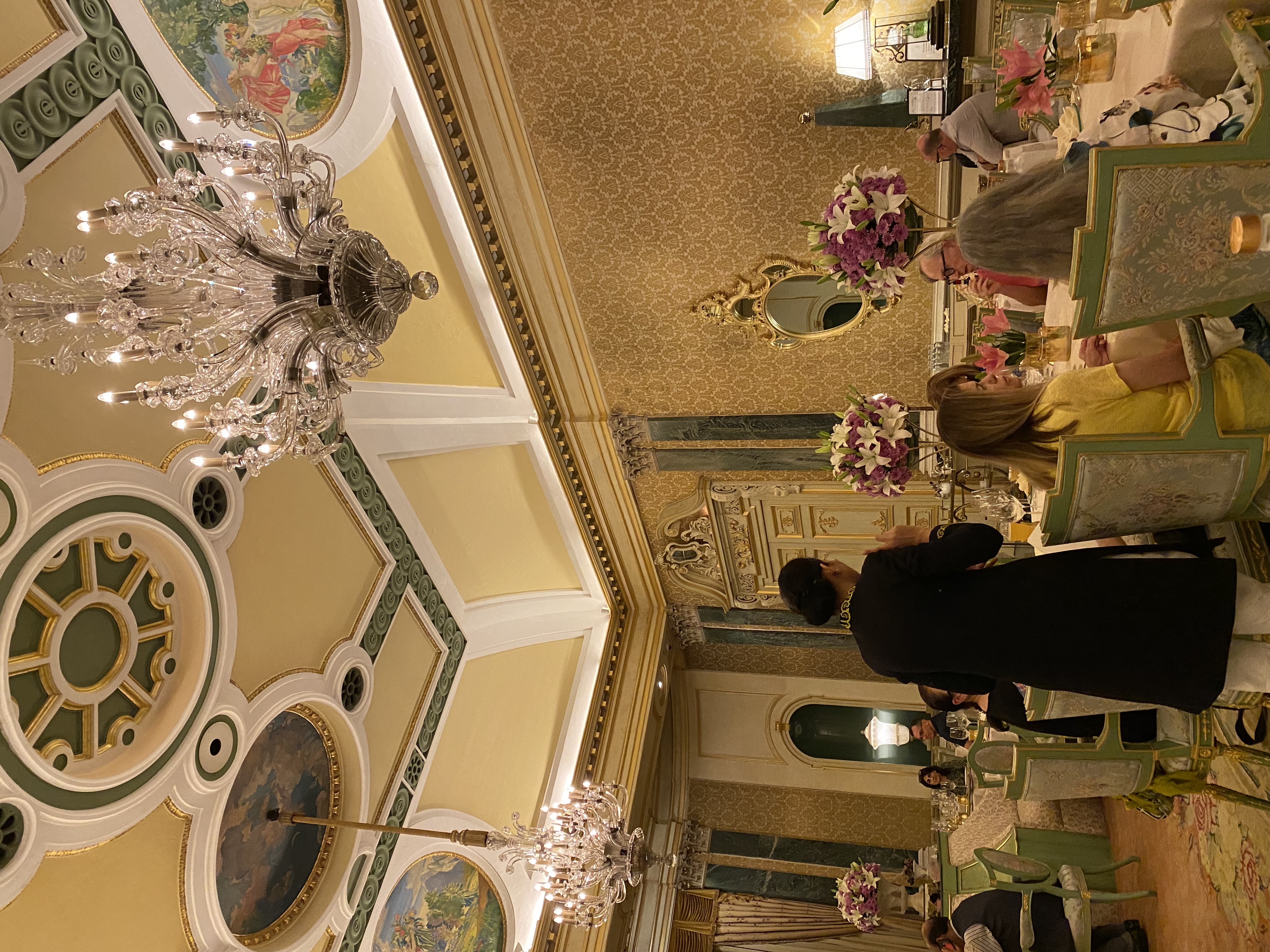
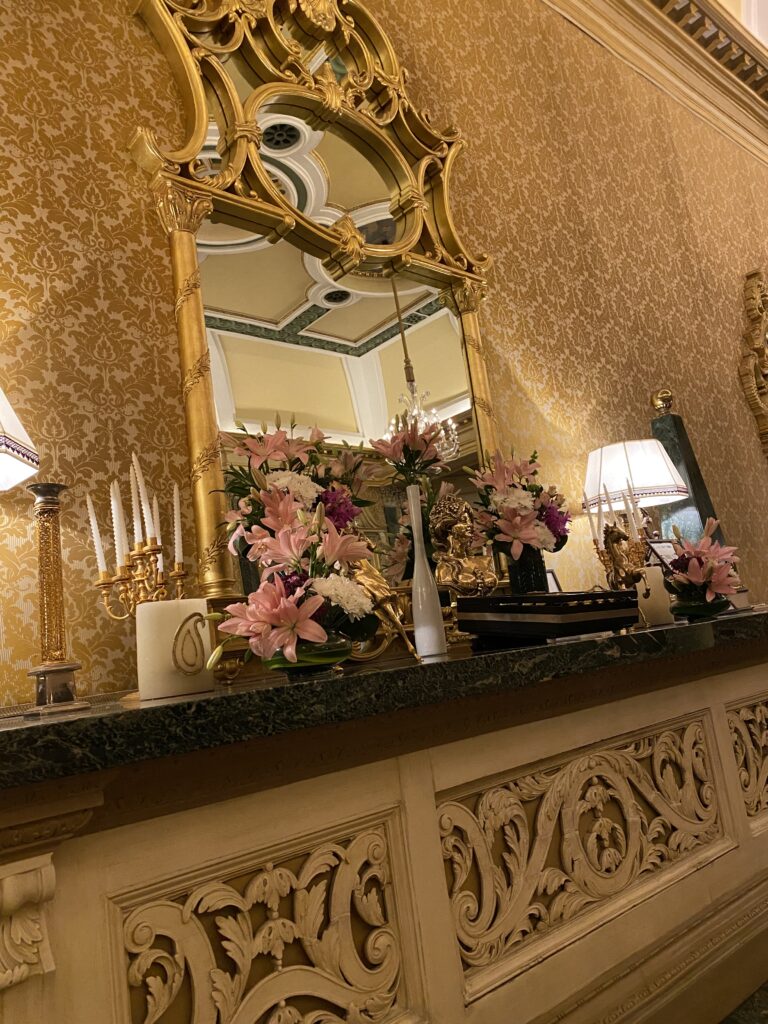
Executive Chef Raghu Deora has reinvigorated classic dishes from India’s royal heritage, drawing inspiration from the cuisines of the four princely states of Rajasthan, Awadh, Punjab, and Hyderabad. The Suvarna Mahal Restaurant’s signature experience is the Royal Thali menu. Thali menus consist of 5-7 small dishes served on a central platter. The goal is to bring balance to one’s diet by including elements from all the main nutritional food groups (carbohydrates, protein, dairy, fruit &veg, fats, sugars), with each dish catering to one of our six tastebuds: sweet, salty, bitter, sour, spicy, and astringent.
We opted for the non-vegetarian Suvarna Mahal Royal Thali menu, which consisted of a choice of starter, and a selection of small bowls presented in the style of a degustation menu. These are presented on a single tray, and the experience is completed with a sample plate of traditional desserts. There’s also an extensive a la carte option, which delves further into the cuisine of each region, offering multiple starter and main courses to choose from.
My appetizer was the Kalonji Jhinga; spicy king prawns marinated in citrus, cardamom, and onion seeds, cooked in a tandoor. Service was a let down because of the delay in getting our drinks to the table. Our original choice of wine was unavailable, so we ordered another (also unavailable), which signalled to us that we should perhaps switch to beer instead. It was the right call, as the kingfisher premium was crisp and perfect. Sadly, my starter had gone cold by the time I could enjoy it with food. As a side note, wines are astronomically priced—even on the low end.
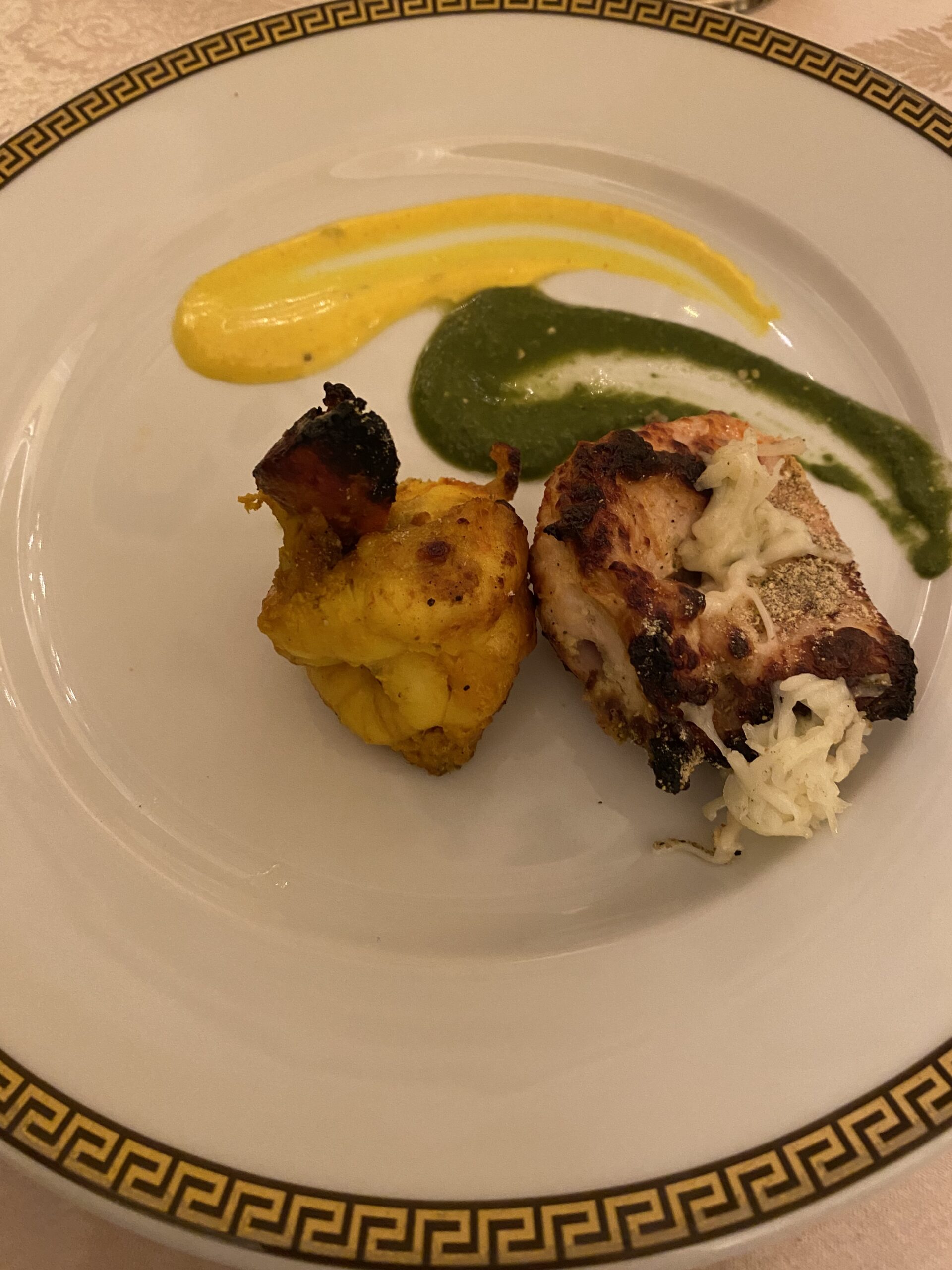
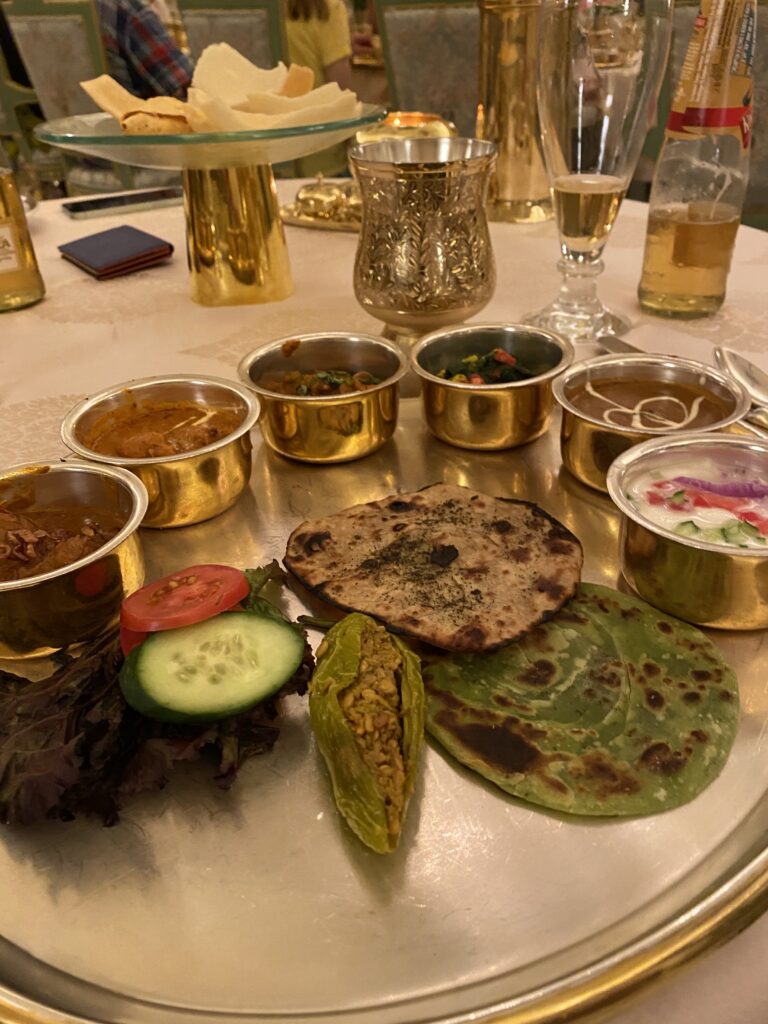
The small main dishes were good, with the Murgh Tikka Butter Masala being the stand-out. When our server asked if we wanted to try anything additional, I had to give it another whirl, it was so good. The curries were accompanied by saffron-infused rice, which was aromatic and on the right side of al dente. The Dal Suvarna was a rich concoction of black lentil deliciousness, having spent 12 hours simmering on the pot, with a vegetable-infused raita adding some much-needed freshness. Paratha and naan breads came as standard for both veg and non-veg options. The dessert plate of small bites included halwa, a rolled pancake topped with condensed milk, and traditional kulfi. This, I didn’t care much for.
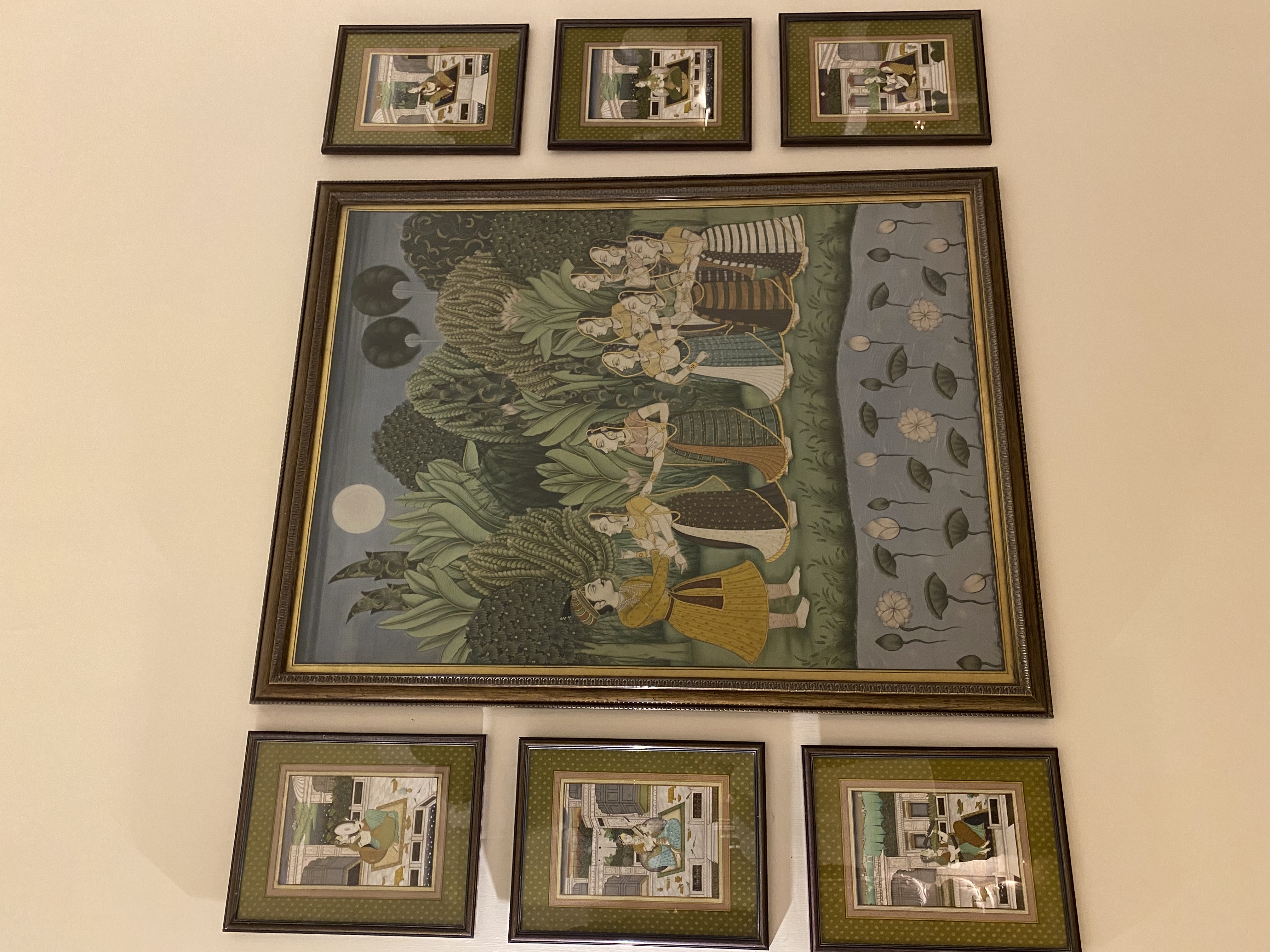
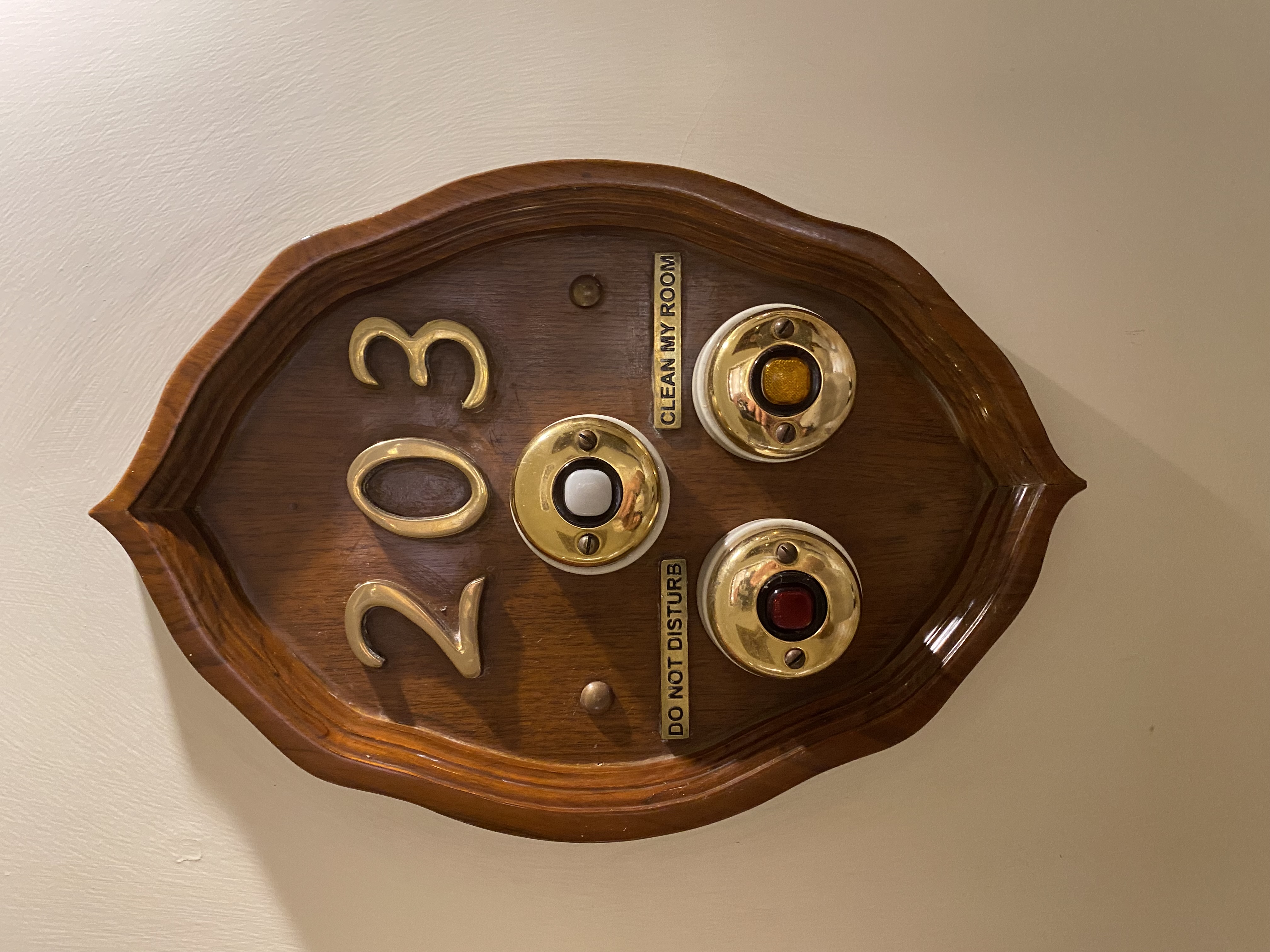
The Verdict
There’s an old-world charm to the Suvarna Mahal Restaurant, which has a lot to do with its association with the Rambagh Palace Hotel. At this price point and location, I would expect impeccable service and immaculate presentation. On the first point, the intentions were there, and the service was done with kindness. But it wasn’t without its problems. On the latter, the novelty of the thali and a few stand-out dishes smoothed-over some of the unevenness. The dining room was a little stuffy and it was a shame the food didn’t hold its own against the grandiose setting. The overall experience still made for a memorable evening, even if the multi-course dining experience wasn’t the complete star of the show.
Restaurant – 6/10
Experience – 7/10

